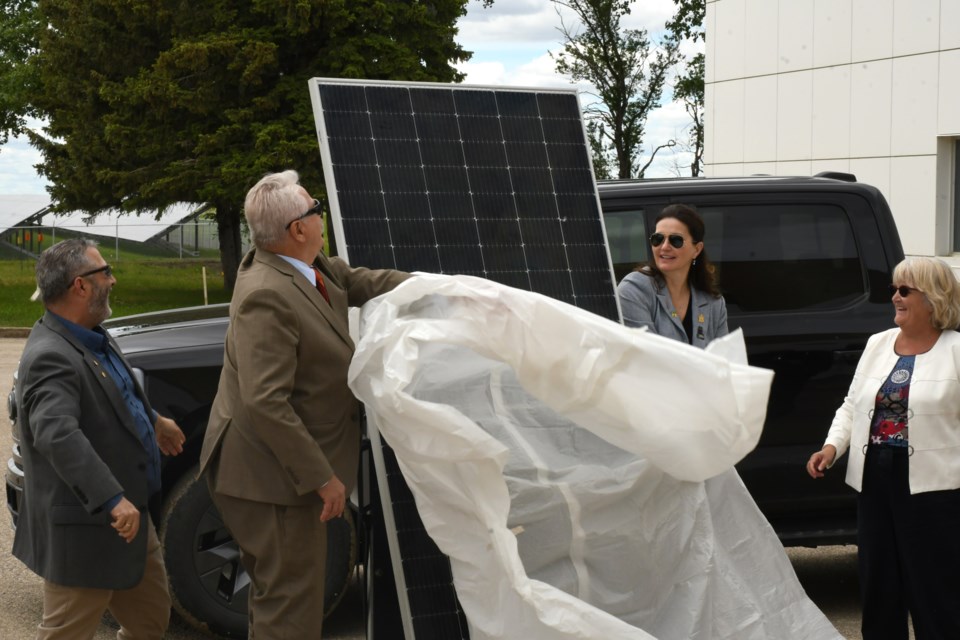BUFFALO POUND WATER TREATMENT PLANT — In a province known for agriculture and sunny skies, it’s fitting that the approach to the Buffalo Pound Water Treatment Plant can now harvest the sun’s rays thanks to a recently unveiled $4 million solar power project announced by the Buffalo Pound Water Treatment Corporation (BPWTC) on June 18.
The solar project launched in August 2022 will soon generate 10 per cent of the plant’s annual power consumption starting later this June, and administrators expect to see a full payback within 15 years because of reduced outside power requirements.
“The Buffalo Pound Water Treatment Plant’s solar project is not just (an) investment in renewable energy; it is a commitment to our community for generations to come,” announced Regina’s mayor, Sandra Masters.
The new solar array is designed to generate 1,800 kilowatts of AC power and will be used to power the plant’s new administration building as it operates independently of the SaskPower grid. Total savings from the project are estimated at $330,000 per year, which will help reduce the current total expenditure of around $3 million annually.
The panels also represent just one component of the plant’s new upgrades.
Originally commissioned in 1955, the facility has played a critical role for residents of southern Saskatchewan over the past 70 years, but upgrades have been few and far between.
The latest upgrades began in July 2022 and will see a lot of what Ryan Johnson, the plant’s president and CEO, described as “old-school technology” replaced with cutting-edge components, including n-plus-one redundancies to ensure consistent operations.
All said, Johnson said these upgrades will ultimately extend the plant’s lifespan by another 25 to 30 years – a time frame that’s typical for this type of facility.
The solar component of the upgrade may only account for 10 per cent of the plant’s total consumption, but Patricia Wasaba, chair of the BPWTC board, said it’s a step in the right direction.
“(While it) represents a small portion of the energy consumed by the plant, it is a significant step and we anticipate that it will lead to an expansion into additional green energy projects in the future,” she announced.
She also noted that, for the plant to be fully powered by solar energy, approximately 75 acres of panels would be required due to the high energy requirements of its pumps and other equipment.
Johnson took the opportunity to remind everyone of the importance of water conservation, especially during the hot summer forecasted this year.
For residents of Moose Jaw, the plant is supported by water reservoirs within the city that can provide enough water for three days at current consumption rates, but Johnson said this can drop down to two days when temperatures start to climb.
Wasaba then thanked Masters and Moose Jaw’s Mayor, Clive Tolley, for their ongoing support. These two cities share ownership of the plant with the City of Regina owning 74 per cent and Moose Jaw owning the remaining 26 per cent.
“I also want to say a very special thank you to all the Buffalo Pound Water Treatment Plant staff… We are fortunate to have such a skilled and committed team of employees supporting this crucial resource,” she said in an address to the plant’s 36 staff members who help provide water for nearly one quarter of Saskatchewan’s residents.
The Buffalo Pound Water Treatment Plant is located approximately 30 kilometres northeast of the City of Moose Jaw.
Upgrades are expected to be completed in around 18 to 20 months with a final completion date projected for early 2026.




